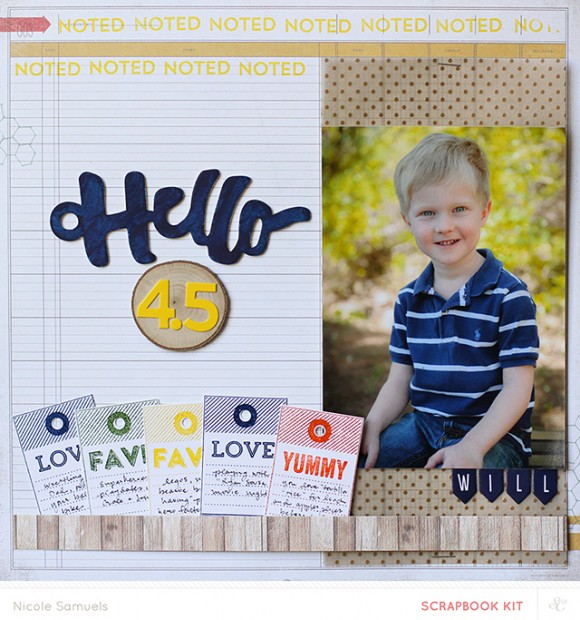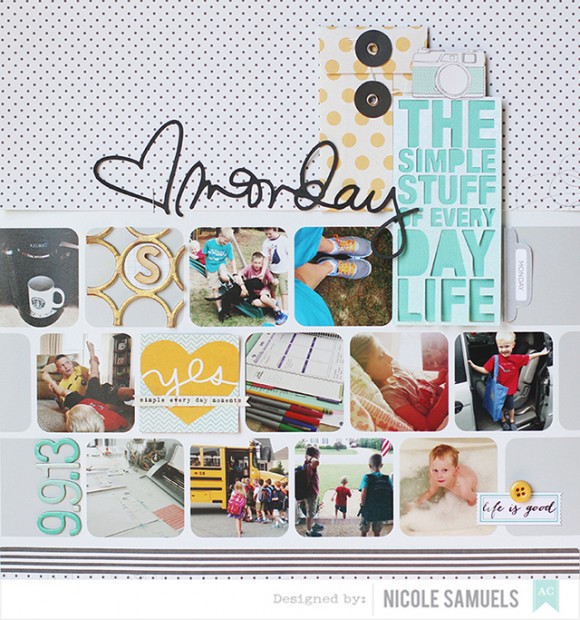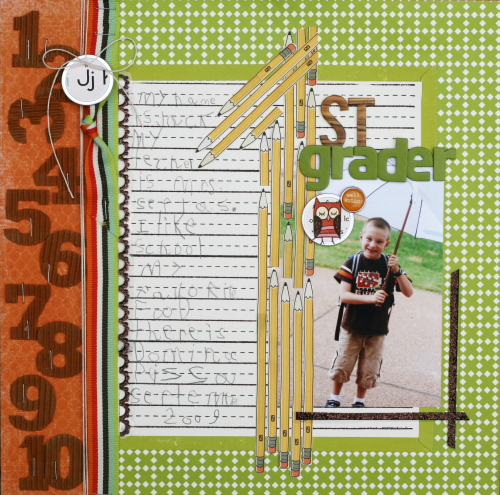
At its core, scrapbooking is a form of storytelling. Underneath the pretty paper and stickers, scrapbookers use their photos combined with words to document their lives in a meaningful way. For many crafters, however, the words are sometimes hard to get down on the page. Many of us (yes, I’m including myself in this category!) dread the thought of penning long paragraphs of prose. So how can reluctant journalers still create pages that tell stories in meaningful ways? I have seven journaling ideas that can help you get the words flowing so that your stories don’t get forgotten.

1. Use prompts. Prompts are just single words or even short questions that you respond to or answer on your layout. Many stamps and stickers can serve as prompts and make it easy to write short blurbs without feeling the need to craft whole paragraphs. I also like that prompts often get me thinking of stories and memories that I might not have thought to include in my scrapbooks. Ali Edwards has a new subscription program called, Story Stamps which is perfect for those of us who need a little framework and structure for our journaling. Each month a new stamp set is release that contains various prompts and words related to a certain theme. You can use these words and phrases as the starting points for your thoughts and as a way to spark your journaling. On the pages below I used stamped words as prompts to guide my words. Sometimes even a simple word like “today” can give you a starting point for telling the story of your photo. 
2. Try a quote. I often consider my scrapbook pages to be little love letters to my children. They are a way for me to tell them how much they are loved or to give them a bit of motherly advice and encouragement. I love using quotes for this type of page. I find Dr. Seuss quotes especially appropriate for the elementary years! You can use a quote as a jumping off point for further journaling or let the quote do the talking all on its own.

3. Make a list. I think everyone appreciates a nice, ordered list. Quick and direct, lists can help you get down a lot of information in a little bit of time and space. You can use bullet points, a numbered list, or even try an alphabet list. List one thing about the person/event/memory for every letter of the alphabet and you’ll really get creative with your storytelling! 
4. Create a timeline. Use a timeline to tell your story. It can be one that stretches over many years or just a daily schedule of what you do, where you go, and who you see. These types of pages are always fun to look back on because they really give a snapshot of our daily lives.

5. Use humor. Not every story needs to be serious and deep! Try journaling with some humor and silliness and you might find that the words come more freely. I was inspired by the monster themed paper on this page below to write about the “monster” qualities of each of my children’s personalities! This page still makes us giggle. (And it’s still pretty accurate of them years later!) 
6. Record a conversation. This approach is great for pages about young children, because they are always saying funny and adorable things. Grab a recent photo and let your journaling be just a transcript of the conversation you want to document.
7. Hand over the journaling pen. Almost every single page in my scrapbooks is in only MY voice. The thoughts and stories are from my perspective. However, I’m not the only one in my family! Every once in awhile, hand over the journaling pen to someone else and let THEIR voice be heard on your page. This is also a great way to document a sample of your child’s handwriting as they progress through school.

Next time you’re feeling some writer’s block, give one of these ideas a try. You might enjoy the process a little more and even find more stories waiting to be told!


